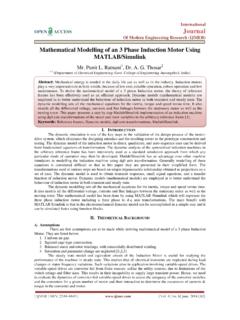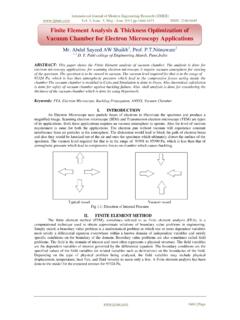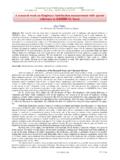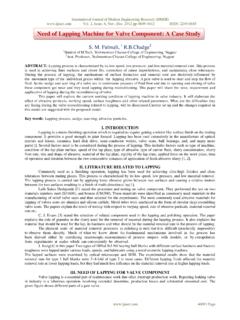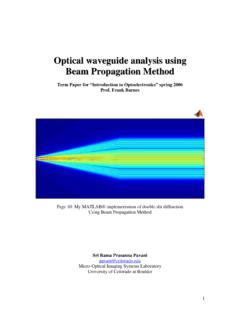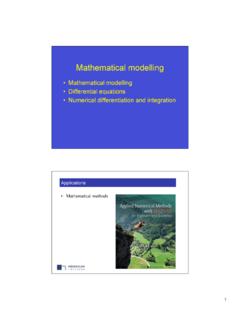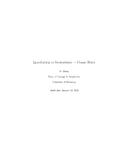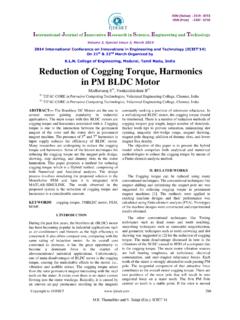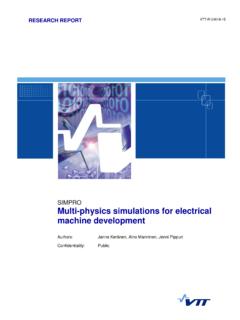Transcription of Cost Optimization Of Doubly Reinforced Rectangular Beam ...
1 International Journal of Modern Engineering Research (IJMER) Vol. 2, Issue. 5, 2012 pp-3939-3942 ISSN: 2249-6645 3939 | Page S. A. Bhalchandra1, 1, 2(Applied Mechanics Department, Government College of Engineering Aurangabad, India ABSTRACT : In this paper, optimum design of simply supported Doubly Reinforced beams with uniformly distributed and concentrated load has been done by incorporating actual self weight of beam, parabolic stress block, moment-equilibrium and serviceability constraints besides other constraints.)
2 The Optimization techniques in general enable designers to find the best design for the structure under consideration. In this particular case, the principal design objective is to minimize the total cost of a structure. The resulting structure, however, should not only be marked with a low price but also comply with all strength and serviceability requirements for a given level of the applied load. Total cost includes cost of concrete, cost of steel and cost of formwork are considered.
3 A comparative study between the classical Optimization techniques, namely the Generalized Reduced Gradient Method, Interior point algorithm Optimization technique using MATLAB and one of the heuristic techniques, namely the Genetic Algorithm was carried out in this research. The initial solution for the Optimization procedure has been obtained using limit state design as per IS: 456-2000. Keywords: cost Optimization , generalized reduced gradient method, genetic algorithm, interior point method, Reinforced concrete.
4 I. Introduction Optimum design of structures has been the topic of many studies in the field of structural design. A designer s goal is to develop an optimal solution for the structural design under consideration. An optimal solution normally implies the most economic structure without impairing the functional purposes the structure is supposed to serve. Structural design requires judgment, intuition and experience, besides the ability to design structures to be safe, serviceable and economical. The design codes do not directly give a design satisfying all of the above conditions.
5 Thus, a designer has to execute a number of designs-analyze cycles before converging on the best solution. The intuitive design experience of an expert designer can give a good initial solution, which can reduce the number of design-analyze cycles. The Optimization involves choosing of the design variables in such a way that the cost of the beam is the minimum, subject to the satisfaction of behavioral and geometrical constraints as per recommended method of design codes. Doubly Reinforced beams (DRB) are required to be designed when the depth of the beam is restricted by architectural considerations and the beam has to take moment greater than limiting moment of resistance of the corresponding singly Reinforced beam (SRB).
6 Some structure Optimization work deals with minimization of cost of the structure using [1, 2, 3], some of the researchers have worked on cost Optimization of the Doubly Reinforced concrete beam structure [4, 5, 6], most of researchers have worked on cost Optimization of Reinforced concrete structure [7, 8], geometric programming model which gives the unique least-cost design of a beam, considering the cost of materials and shuttering and the structural requirements [9]. Whereas a natural velocity field method for shape Optimization of Reinforced concrete (RC) flexural members has been demonstrated [10].
7 The application of the Lagrangian Multiplier Method (LMM) to the minimum cost design of both singly and Doubly Reinforced concrete Rectangular beams under limit state design conditions [11]. An initial solution for each case is obtained using the limit state method, by including self weight of the beam and considering parabolic stress block. The limit state design and the Optimization is performed, subject to satisfaction of moment capacity, actual deflection and durability behavioral constraints, besides other geometrical constraints as recommended in IS: 456-2000 [12].
8 II. Optimization Technique Classical Search and Optimization techniques Traditional search and Optimization methods can be classified into two distinct groups: Direct and gradient-based methods. In direct methods, only objective function and constraints are used to guide the search strategy, whereas gradient-based methods use the first and/or second-order derivatives of the objective function and/or constraints to guide the search process. Since derivative information is not used, the direct search methods are usually slow, requiring many function evaluations for convergence.
9 For the same reason, they can be applied to many problems without a major change of the algorithm. On the other hand, gradient-based methods quickly converge to an optimal solution, but are not efficient in non differentiable or discontinuous problems. The Generalized Reduced Gradient Method The Generalized Reduced Gradient (GRG) Methods are algorithms for solving nonlinear programs of general structure. GRG uses first partial derivatives of each function with respect to each variable. These are automatically computed by finite difference approximation (either forward or central differences).
10 After an initial data entry segment, the program operates in two phases. If the initial values of the variables supplied by the user do not satisfy all the constraints, a Phase I Optimization is started. The Phase I objective function is the sum of the constraint violations plus, optionally, a fraction of the true objective. This Optimization terminates either with a message that the problem is infeasible or with a feasible solution. Beware if an infeasibility message is produced, because the program may have become stuck at a local minimum of the Phase I Cost Optimization Of Doubly Reinforced Rectangular Beam Section International Journal of Modern Engineering Research (IJMER) Vol.
